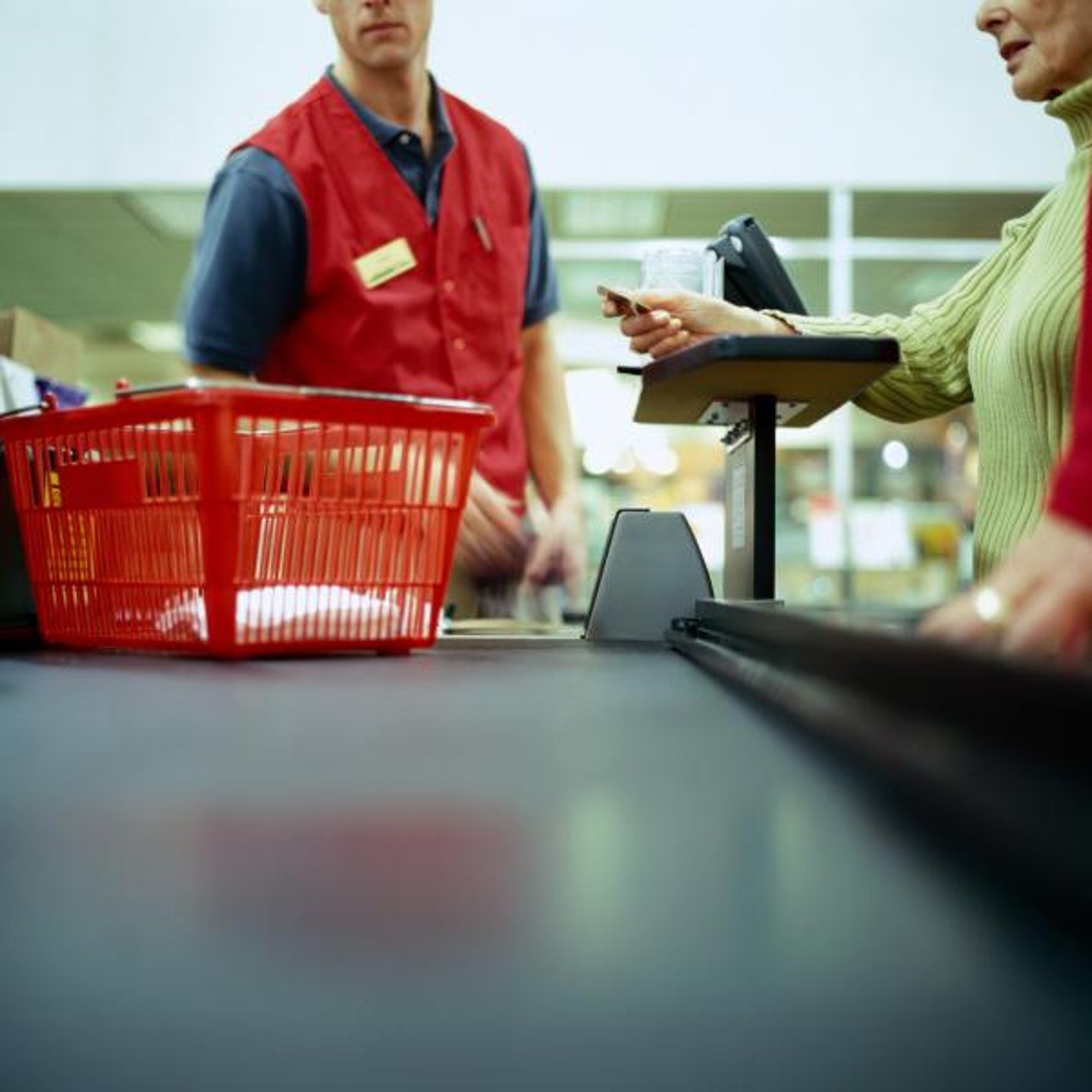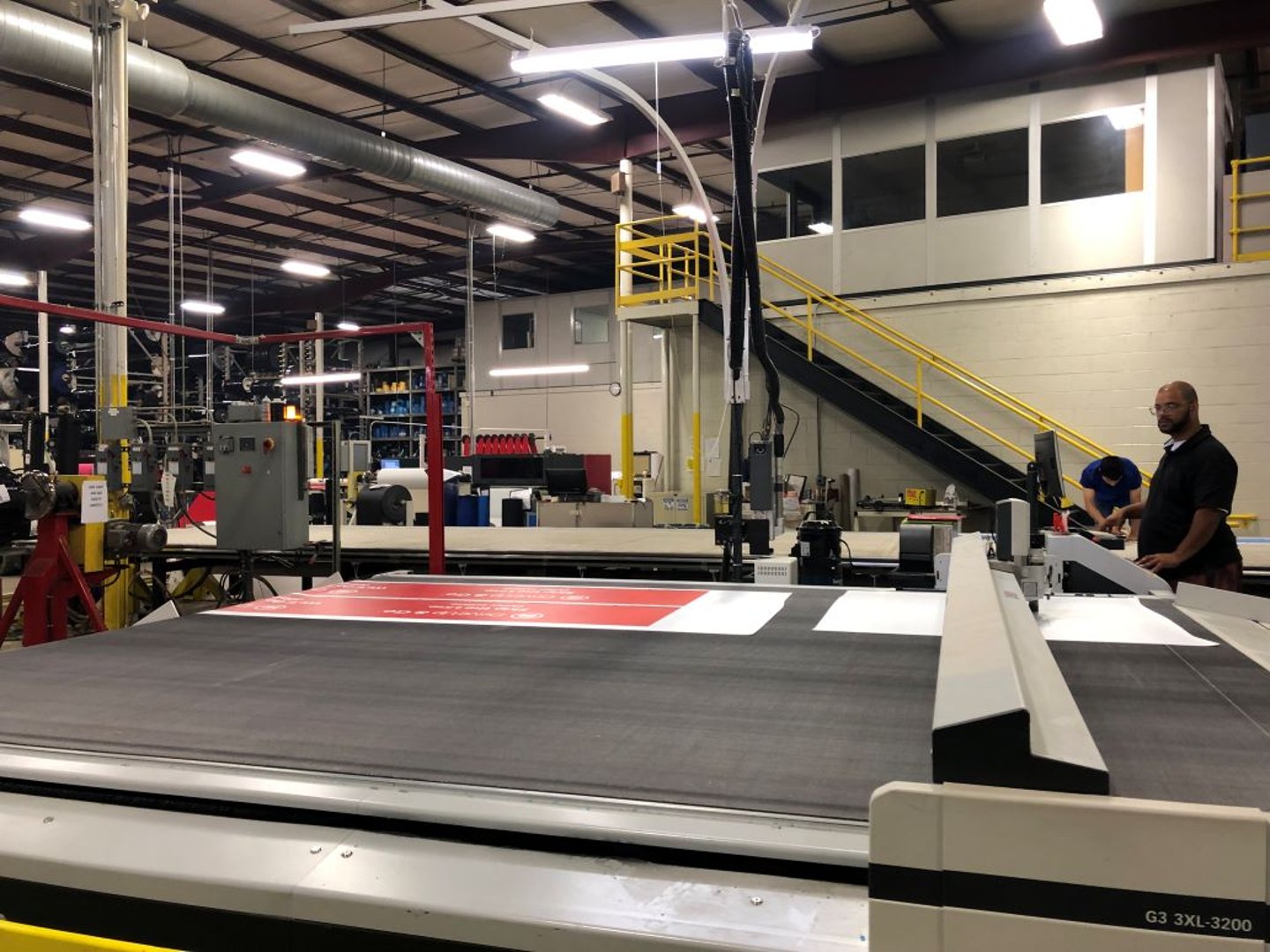Conveyor Belts Move the Checkout Experience Forward
The checkstand conveyor belt is one of the last points of contact between a shopper and a retailer, but it’s certainly not the least.
In a climate of fast-moving changes in the grocery sector and a heightened awareness of sanitary surfaces, updates in conveyor design and installation are moving along accordingly. Mol Belting, a Grand Rapids, Mich.-based manufacturer and wholesale dealer of conveyor belts that supplies about 95% of the conveyor belts used in grocery stores in this country, is focusing on innovations that help retailers meet their needs for service, convenience, cleanliness, and even marketing and promotions.
Indeed, it may just seem like a piece of equipment that moves products from Point A to Point B in the checkout area, but the conveyor belt can be a key multifunctional component. As the lead provider in this segment by a wide margin, Mol Belting has some insights into why and how that’s true.
Conveying a Message
For example, grocers can use checkstand belts to literally and figuratively convey messages to their customers.
Mol Belting offers a new QR code printed belt can be customized with retailer logo’s and messages via a high-volume inkjet printer that provides high-resolution, high-impact graphics and colors.
The covers, which are also treated with an antimicrobial coating, are installed by the company’s experts in less than five minutes via a pressure-sensitive adhesive, and can be easily removed by store employees once a particular promotion or message event is over.
In addition to promotional messaging, conveyor belt coverscan be part of community outreach and fundraising programs. In 2020, Mol Belting worked with retailers in Michigan on a conveyor cover for the Salvation Army’s annual Red Kettle campaign for the holidays.
“In 15 lanes, over a 35-day period, they raised over $9,000 using this — and that’s in the middle of a pandemic. When you run the numbers out, for every 100,000 belts you can raise millions,” says David Hathaway, Mol Belting’s SVP and general counsel, adding that the company is currently working with the Salvation Army organization to widen the use of themed belt covers for this year’s holiday campaign.
Beyond conveyor belt covers, grocers can build on their brand and elevate the look of their checkstands by opting for a different conveyor belt color than the standard black. “We can make any color you want – even your store color,” says Edward Mol, president of the company and second-generation leader of the business.
Duane Nizinski, Mol Belting’s director of strategic marketing initiatives, agreed that color can differentiate a store’s look and feel. “Retailers want to try something new right now to get people back into the stores,” he notes. “Experience is more important than ever.”
While black belts have traditionally been chosen because they mask dirt, grime or other imperfections, grocers can both clean and sanitize the surface with cloths, cleaning pads and cleaners that Mol Belting provides, according to Mol and Nizinski.
Coated for Cleanliness
Certainly, COVID-19 has brought the importance of sanitation to the fore and provided an even greater impetus for grocers to button up sanitary practices across their operations. Grocers are also demonstrating their commitment to shoppers in a visible way, from protective shields installed at checkout areas to stalls of pre-sanitized carts.
Even before the coronavirus emerged, Mol Belting was working on greater checkstand sanitation. About seven years ago, the company began exploring technologies to treat belts with a sanitizing compound, after assessing the results of a checkstand sanitation study from former Michigan State University microbiologist Dr. Zhinong Yan.
“Dr. Yan found that high microbial populations were present in 100% of the samples collected from checkstand conveyor belts in grocery stores, but no foodborne pathogens,” explains Hathaway. “He concluded that more stringent sanitation practices are necessary in the retail checkstand environment.”
According to Mol, the emergence of COVID-19 injected a new need and urgency into belt sanitation. “Viruses are a whole other thing,” he observes. “Viruses are not technically alive, but they are replicable, and that is a problem.”
As its past research and current COVID-19 events coincide, Mol Belting is launching a new Molchem technology and product line that includes coated checkstand belts and other products designed for surfaces and personal hygiene. Its multilayer PVC conveyor belt has been treated with a compound comprising a surface hardener, liquid polyurethane, and an antimicrobial agent approved by the U.S. Food and Drug Administration and registered with the U.S. Environmental Protection Agency. The belt is designed to be scratch-resident and easy to clean.
To accompany the coated belt, Mol Belting offers a checkstand and belt multipurpose cleaner that also can be used on other surfaces like metal, plastic, stainless steel and shopping carts, among other areas within a store. This cleaner is proven effective on bacteria and viruses compared with other cleaners that aren’t designed for conveyor surfaces, and that can negatively affect belt material.
As part of its complete sanitary system, the pros at the Molchem brand recommend first cleaning debris between the belt and conveyor strikeplate, spraying with the belt cleaner, wiping the area using a lint-free cloth and/or cleaning pad, and coating the surface of the coated belt with an antimicrobial coating like Molchem’s Biotrexx 247. To confirm and track cleaning from checkstand to checkstand and store to store, grocers can use an app that was developed for the Molchem brand, with a detailed dashboard and accessible data.
Extending the cleaning technology to a personal level, the company has also developed a new hand purifier. The product is different from traditional hand sanitizers in that it extends protection for hours and is nontoxic and nonflammable. It will be available in a 2-ounce foaming pump bottle, an 8-ounce foaming pump bottle, a 1-gallon jug, a 5-gallon pail and a 55-gallon drum. Mol Belting also offers Molchem hand purifier stations in a floorstand station format, which is currently in use at Harding’s Markets in Michigan.
Phil Lempert, a food industry analyst and author, has partnered with Mol Belting to share the benefits of the Molchem technology with the grocery industry. According to Lempert, the trends of the pandemic — especially the expectation for cleanliness — will continue in the long term. “As the pandemic slowed down, some people got sloppy. Now, with the Delta variant, there’s no question that consumers want a clean, safe store and want it to align with their values,” Lempert notes, adding that retailers are — and should be — addressing such needs and demands. “It sends a message that ‘I, as a retailer, care about you,’ and Molchem is bringing attention to front end sanitation.”
Lempert also underscores the convergence of the shared values of health and wellness and sustainability among today’s consumers, noting that Mol Belting has developed a DC motor that uses 78% less power than a traditional AC motor and can be run with no oil. The motor will be available in early 2022.
QR on the QT
The Molchem checkstand belt is designed to convey products in a clean way from a shopper’s cart to the bagging area, but that piece of real estate can be valuable to grocers from a marketing perspective, too, thanks to a QR code on the conveyor and in supporting materials displayed at checkout. Through that code, shoppers can link to a site that features information on a store’s sanitation practices as well as other store updates, from product highlights to sale information.
“The checkstand conveyor hasn’t been conceived of before as a media platform, and this really changes the whole conversation on what a checkstand can be,” Lempert says. “It affords a retailer a new way to engage with shoppers. The fact that 60% of consumers are using their phone as their primary device supports the potential of the QR code at the checkout area, he adds.
Grocers, in turn, can engage with their CPG partners to invest in advertising on this kind of platform. “Retailers can be empowered to have a new revenue source,” Lempert points out.
Company president Ed Mol says that efforts to add messaging and antimicrobial protection to grocery checkstand conveyors with a supporting cleaning system has allowed Mol Belting to tap into its engineering talent and create new avenues for growth. “This is truly a startup,” he observes. “From the testing that was required to the rest of the whole project, we had to do things like a startup company would do.”
Just Scratching the Surface
Mol Belting is also diversifying its portfolio with a new Molchem antimicrobial coated messenger mat that can be placed throughout a store, including self-checkout areas, customer service desks and other departments, like the pharmacies and deli counters. Meanwhile, as a solution for in-store bakeries, the company is also rolling out a new Molchem industrial silicone baking sheet that cuts the cost and waste of parchment.
Finally, as it expands its offerings and helps grocers address sanitation and service, Mol Belting has embraced the greater concepts of wellness and sustainability by taking part in a nonprofit group called the Clean and Green Pledge Society, created by Hathaway. Through this initiative, organizations such as growers, producers, manufacturers and retailers make a “clean and green” commitment to minimize environmental impact and take steps to ensure cleanliness and sanitation, among other measures. Ultimately, according to Hathaway and Mol, the organization will be a 501(c)(3) charity, and a portion of the proceeds from Molchem sales will help support these causes.






